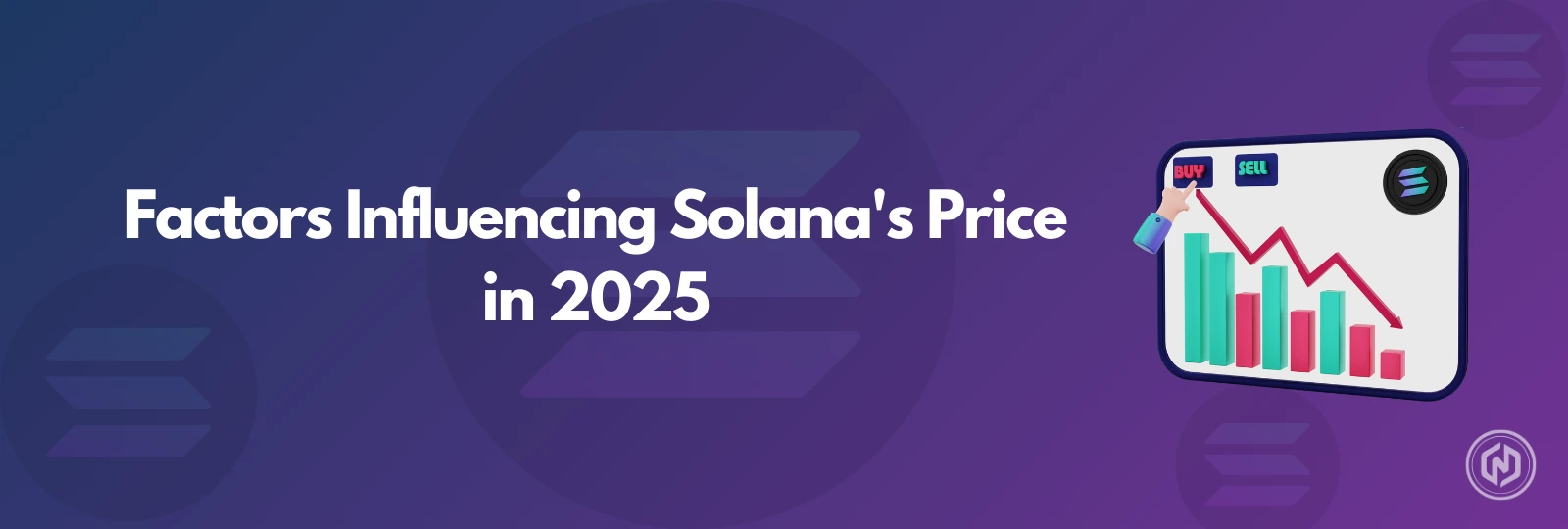Solana Overview states that it has been using the Proof-of-Stake (PoS) mechanism, which will then be improved with Proof-of-History (PoH) that will use timestamps to confirm the time of when the transactions occurred. Solana is particularly designed for removing performance bottlenecks caused by blockchain software, thereby making it more scalable and decentralized.
Considering these factors, following up on Solana price prediction is very important, especially for investors to stay ahead in the game before the price hits maximum levels. This article provides a detailed Solana price overview and how Solana is being affected by different factors, both positively and negatively.
Market Sentiment and Crypto Trends
Market sentiment and crypto trends are major factors that affect Solana’s price. Solana market sentiment and crypto trends can be changed from time to time based on a few factors like the Fear and Greed Index, social media influence, and macroeconomic factors like regulatory developments.
When it comes to crypto trends, Solana is one step ahead of Ethereum in terms of DEX trading volume and lower transaction fees. Due to these factors, many important projects like NFTs, DeFi, and Web3 gaming have adopted Solana instead of Ethereum.
Solana’s Ecosystem Growth
Solana’s ecosystem has been growing positively ever since the TOKEN2049 event at the Breakpoint 2024 event in Singapore. This event proved that Solana is an apt competitor for becoming a Real World Assets (RWAs). Its ability to manage large volumes of transactions efficiently has led to Solana’s commitment to tokenization on its public Layer 1.
Moreover, partnerships with some of the well-known organizations have also increased the growth of Solana’s ecosystem. Some of them are PayPal which has introduced PYUSD stablecoin and Visa for stablecoin settlements.
Citi Bank is also investigating the Solana ecosystem adoption for carrying out cross-border transactions and smart contracts. Such huge partnerships might provide opportunities for Solana to step up its level over Ethereum.
Network Performance and Scalability
Transaction Speed and Cost-Effectiveness
The Solana network performance is greater than its competitors since it designed a unique networking protocol to correspond to its transaction speeds. This block propagation protocol, also known as Turbine, can transmit data over a network at lightning-fast speeds.
Moreover, Turbine breaks down the data of transactions into smaller amounts and sends them to the network instead of sending it as a whole block, making transmission easy. The duplication issue is also solved by Solana since it uses erasure coding techniques.
Security and Reliability of the Network
Solana’s network has multiple methods of security to ensure that the transactions happening are safe and private. One of the security features of the network is the timestamping method, or the PoH, where there will be timestamps for every transactional data.
Using the parallel processing method, each transaction is carried out independently, reducing the risk of affecting other transactions. This reduces the Denial-of-Service attacks, which can easily break into a congested transaction and not an isolated one.
Regulatory Developments
Solana regulations can also be a major drawback to its growth. The U.S. Securities and Exchange Commission (SEC) has initiated one of the recent legal actions against altcoins like Solana. The main complaint states that Solana should not be called “Crypto asset security.” This is because SOL has initially persuaded investors to see themselves as a chance to profit from its expansion.
However, the term ‘securities’ is associated with investments that could provide profits that are generated by the efforts of others. Such factors will affect the Solana price prediction until the judgment comes in favor of it.
Competition from Other Blockchains
Solana is also facing heavy competition from other blockchains like Cardano and Ethereum. Solana vs Ethereum competition began because the initial blockchains, like Ethereum and Bitcoin, had an issue in providing rewards for those who participated in transactions.
Since a huge amount of power is consumed to reward each time a transaction takes place, it becomes difficult. However, to solve such issues, Solana uses a PoS system where the miner must stake their cryptocurrency first, and then the platform will automatically identify top miners, reducing power consumption.
Tokenomics and Supply Constraints
Solana tokenomics states that it starts at 8% yearly; Solana uses a dynamic inflation model that lowers by 15% annually until it reaches a long-term goal of 1.5%. Since over 68% of SOL is staked, there will be a supply constraint in the market.
Meanwhile, Ethereum has adopted a deflationary approach following the Merge and EIP-1559. This has set a staking reward structure, but it now burns some of the transaction fees. This method might gradually decrease the amount of ETH in circulation, creating scarcity. During that period, Solana’s inflationary supply method will be rising since the rising demand and utility will always back it up.
Institutional Interest in Solana
Solana is the topmost institutional crypto investment since it has been in partnership with VanEck and Klin to provide institutional investors with an easy and safe way to incorporate staking with Solana. This has raised Solana’s ecosystem by $173 million during the third quarter of 2024, thereby growing the interest of investors.
Moreover, there has been a spike in demand for DeFi that contributed to the sector’s success with a total value of $5.7 billion. Solana is currently trading at $161.34 with a market value of $75.35 billion, up 1% from the previous day.
Conclusion
Considering these factors mentioned in the article, there is a possibility that the Solana price outlook 2025 might show a great price increase. However, regulations and other new projects from competitors might affect the growth of its price.

